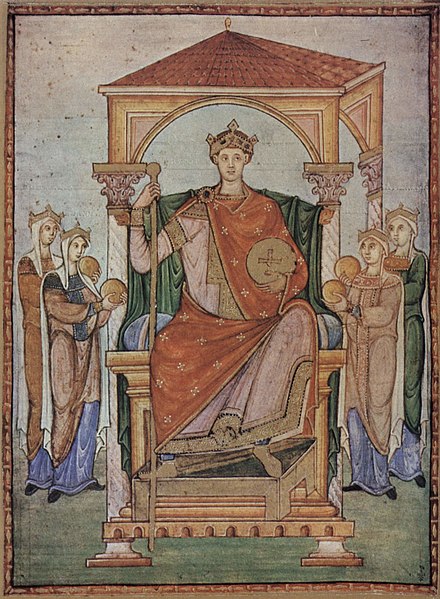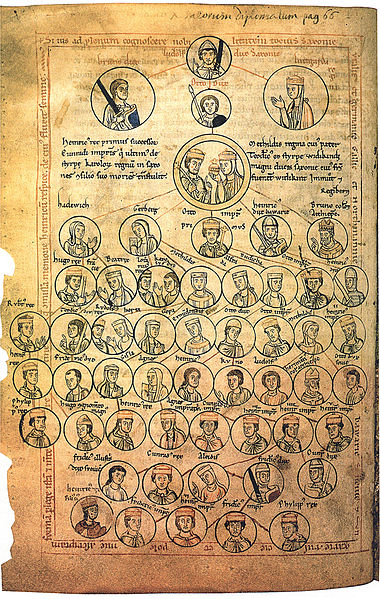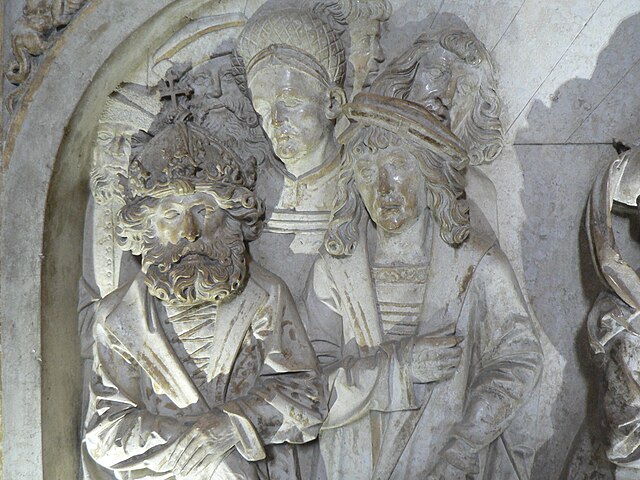The Ottonian Renaissance was a renaissance of Byzantine and Late Antique art in Central and Southern Europe that accompanied the reigns of the first three Holy Roman Emperors of the Ottonian dynasty: Otto I (936–973), Otto II (973–983), and Otto III (983–1002), and which in large part depended upon their patronage. The leading figures in this movement were Pope Sylvester II and Abbo of Fleury. Renewed contact between the Ottonian court and Byzantine Constantinople spurred the hybridisation of Eastern-Byzantine and Western-Latin cultures, particularly in arts, architecture and metalwork, while the Ottonians revitalised the cathedral school network which promoted learning based on the seven liberal arts. Ottonian intellectual activity was largely a continuation of Carolingian works, but circulated mainly in the cathedral schools and the courts of bishops, rather than the royal court.
Enamel processional cross (Senkschmelzen-Kreuz), former Essen Abbey, about 1000
Ottonian era diagram, Diagram of Byrthferth: the mysteries of the universe
Emperor Otto II, Registrum Gregorii, Trier, c. 985, 27 × 20 cm, Musée Condé, Chantilly
The Ottonian dynasty was a Saxon dynasty of German monarchs (919–1024), named after three of its kings and Holy Roman Emperors named Otto, especially its first Emperor Otto I. It is also known as the Saxon dynasty after the family's origin in the German stem duchy of Saxony. The family itself is also sometimes known as the Liudolfings, after its earliest known member Count Liudolf and one of its most common given names. The Ottonian rulers were successors of the Germanic king Conrad I, who was the only Germanic king to rule in East Francia after the Carolingian dynasty and before this dynasty.
Depiction of the Ottonian family tree in a 13th-century manuscript of the Chronica Sancti Pantaleonis. The founder of the dynasty Liudolf, Duke of Saxony is at the top center.
Gandersheim Abbey Church
Former collegiate church of St. Servatius in Quedlinburg, founded in 936 by King Otto I, at the request of his mother Queen Matilda, in honor of her late husband, Otto's father, King Henry the Fowler, and as his memorial
Detail from the monument to Emperor Henry II, built over his tomb in Bamberg Cathedral more than 350 years after his death







